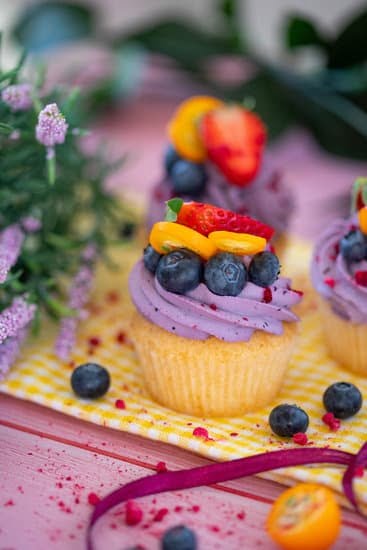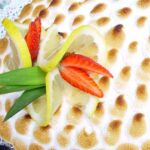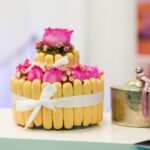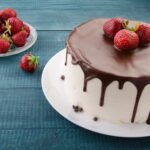Are you looking to take your cake decorating skills to the next level? In this article, we will explore the art of creating delectable and visually stunning butter cream for cake decoration.
Whether you’re a baking enthusiast or a professional pastry chef, mastering the art of butter cream can make all the difference in creating beautifully decorated cakes that are sure to impress. We’ll cover everything from essential ingredients and step-by-step guides to different types of butter cream and troubleshooting common issues, so you can create picture-perfect cakes every time.
When it comes to cake decoration, butter cream is an essential component known for its versatility and smooth texture. Learning how to make butter cream for cake decoration is not only a valuable skill but also allows for endless creative possibilities in showcasing your personal style through intricate designs and patterns.
With our comprehensive guide, you’ll be able to elevate your cake decorating game and create show-stopping desserts that are as delightful to look at as they are to eat.
In the following sections, we will delve into the fundamental ingredients required for making butter cream, provide a step-by-step guide on how to achieve the perfect consistency, explore various types of butter cream and their specific uses, and offer expert tips on troubleshooting common issues that may arise during the process. Additionally, we will share creative cake decoration ideas using butter cream that are guaranteed to inspire your next baking project.
So get ready to embark on a journey of mastering the art of butter cream decoration for your cakes.
The Essential Ingredients for Making Butter Cream
Butter cream is a versatile and popular choice for cake decoration, thanks to its smooth texture and ability to hold various shapes and designs. To create the perfect butter cream for your cakes, it’s important to start with the essential ingredients. Here are the key components you’ll need to make a delicious and beautiful butter cream:
1. Butter: Unsalted butter is typically used for making butter cream. It should be softened at room temperature before use to ensure it blends well with the other ingredients.
2. Confectioners’ Sugar: Also known as powdered sugar, this ingredient sweetens the butter cream and provides structure. Be sure to sift the sugar before adding it to avoid lumps in your butter cream.
3. Vanilla Extract: This adds flavor to the butter cream and complements the sweetness of the confectioners’ sugar. You can also use other flavored extracts or essences for different variations.
4. Milk or Heavy Cream: These liquids are used to adjust the consistency of the butter cream. Adding small amounts at a time can help achieve the desired texture without making the mixture too runny.
5. Salt: A pinch of salt can help balance out the sweetness in the butter cream, but be sure not to overdo it.
When you have these ingredients on hand, you’re ready to begin creating your own delicious butter cream for cake decoration. The following section will provide a step-by-step guide on how to make butter cream, so you can get started on decorating your cakes with ease and confidence.
Step-by-Step Guide on How to Make Butter Cream
Making butter cream for cake decoration is a simple and rewarding process that can take your homemade cakes to the next level. Follow this step-by-step guide to create a smooth and delicious butter cream that is perfect for decorating any type of cake.
- Gather Your Ingredients: The essential ingredients for making butter cream include unsalted butter, powdered sugar, vanilla extract, and heavy cream. It is important to use high-quality ingredients to achieve the best flavor and texture.
- Cream the Butter: Start by beating the room temperature unsalted butter in a mixing bowl until it becomes pale in color and fluffy in texture. This step is crucial for creating a smooth butter cream base.
- Add the Powdered Sugar and Flavoring: Gradually add the powdered sugar to the creamed butter, mixing on low speed until fully incorporated. Then, add vanilla extract or any other desired flavorings for an extra layer of deliciousness.
- Adjust Consistency with Heavy Cream: Depending on the desired consistency of your butter cream, you can adjust it by adding heavy cream one tablespoon at a time until you reach your preferred texture. Be mindful not to add too much liquid as it can make the butter cream too runny.
- Beat Until Smooth: Once all the ingredients are combined, increase the mixer speed to medium-high and beat the mixture until smooth, light, and creamy. Your delicious butter cream is now ready to use for cake decoration.
By following this simple step-by-step guide, you will be able to create a luxurious and versatile butter cream that will elevate any cake decoration project. Whether you are a beginner or experienced baker, mastering the art of making butter cream will allow you to unleash your creativity and impress everyone with your beautifully decorated cakes.
Different Types of Butter Cream and Their Uses
American Butter Cream
American buttercream is the easiest and quickest type of buttercream to make. It is made with a simple mixture of butter, powdered sugar, vanilla, and milk or cream. This type of buttercream has a sweet flavor and can be easily tinted with food coloring for colorful cake decorations. It is best used for simple cake decorating techniques such as frosting a cake or piping simple borders.
Swiss Meringue Buttercream
Swiss meringue buttercream is made by whipping egg whites and sugar over a double boiler until the mixture reaches a certain temperature, then adding in butter until it becomes light and fluffy. This type of buttercream has a silky texture and a less sweet taste compared to American buttercream. Swiss meringue buttercream is great for creating smooth finishes on cakes, piping intricate designs, and adding delicate details to cake decorations.
Italian Meringue Buttercream
Italian meringue buttercream is similar to Swiss meringue buttercream but uses a hot sugar syrup instead of granulated sugar. This creates a even creamier, stable and smoother texture than Swiss Meringue Buttercream because it dissolves the sugars during the cooking process. Italian meringue buttercream is perfect for creating elaborate cake decorations such as flowers, ruffles, and other exquisitely detailed designs.
Each type of butter cream brings its own unique qualities to cake decoration, providing decorators with an array of options when it comes to creating stunning confectionery masterpieces.
In order to master the art of cake decoration using different types of butter cream, it’s important to understand their individual characteristics and uses. Whether you’re aiming for simplicity or intricacy in your cake designs – knowing how to prepare these various types of butter creams is essential.
Tips for Achieving the Perfect Butter Cream Consistency
Achieving the perfect consistency for butter cream is essential for cake decoration. The right consistency will allow you to pipe intricate designs, create smooth finishes, and add beautiful details to your cakes. Here are some tips to help you achieve the perfect butter cream consistency for your next cake decorating project.
First, it’s important to start with the right ratio of ingredients. The basic ingredients for butter cream include butter, confectioners’ sugar, and flavorings. It’s crucial to follow a precise recipe and measure your ingredients accurately to achieve the desired consistency. Too much sugar can make the butter cream too stiff, while too little can make it too runny.
Next, consider the temperature of your ingredients. Room temperature butter is easier to whip and will result in a smoother butter cream. If your butter is too cold, it won’t incorporate well with the other ingredients and can lead to a lumpy or uneven texture. On the other hand, if your kitchen is too warm, your butter may become too soft, affecting the final consistency of your butter cream.
Lastly, pay attention to the mixing process. Overmixing can lead to air bubbles in your butter cream, resulting in a less smooth finish when decorating your cake. Mix just until all ingredients are fully combined and you’ve achieved the desired light and fluffy texture.
In summary, achieving the perfect consistency for butter cream requires precision in measuring ingredients, using room temperature butter, and being mindful of the mixing process. With these tips in mind, you’ll be able to create beautifully decorated cakes with flawless butter cream every time.
| Tip | Description |
|---|---|
| Ingredients Ratio | Use a precise recipe and measure ingredients accurately |
| Temperature | Use room temperature butter for a smoother texture. |
| Mixing Process | Avoid overmixing to prevent air bubbles in the butter cream. |
Creative Cake Decoration Ideas Using Butter Cream
Colorful Butter Cream Flowers
For a fun and vibrant cake decoration, try creating colorful butter cream flowers. Use different piping tips to create various petal shapes and sizes, and experiment with different colors of butter cream to make each flower unique. You can also add some edible glitter or sprinkles in the center of the flowers for an extra touch of sparkle.
Textured Butter Cream Swirls
Create visual interest on your cake by using textured butter cream swirls. You can achieve this effect by using a comb or a fork to create patterns in the butter cream, giving your cake a more rustic and charming look. This is perfect for themed cakes like rustic weddings or farm-themed parties.
Butter Cream Ruffles
For an elegant and sophisticated cake decoration, consider adding butter cream ruffles. Use a petal tip to pipe rows of overlapping “ruffles” around the sides of the cake, giving it a stunning texture and creating a beautiful cascading effect. This technique works especially well for wedding cakes or special occasion cakes where you want to add a touch of glamor.
By utilizing these creative cake decoration ideas using butter cream, you can elevate your cake decorating skills and impress your friends and family with visually stunning confections that not only taste delicious but also look absolutely beautiful.
Remember that practicing these techniques will help you become more comfortable with using butter cream for decoration, so don’t be afraid to experiment and let your creativity shine through.
Troubleshooting Common Butter Cream Issues
While making buttercream for cake decoration, it’s not uncommon to encounter a few issues that can affect the final result of your cake. One common problem is when the buttercream becomes too runny or soft, making it difficult to work with when decorating your cake. This can be caused by using too much liquid, such as milk or flavorings, or by not whipping the butter and sugar mixture for long enough.
Another issue that may arise is when the buttercream becomes too stiff or grainy. This could be due to adding too much powdered sugar or not creaming the butter and sugar together thoroughly enough. In some cases, environmental factors such as humidity and temperature can also play a role in affecting the consistency of your buttercream.
To troubleshoot these common problems, there are a few simple solutions you can try. If your buttercream is too runny, try chilling it in the refrigerator for a short period of time to firm it up.
On the other hand, if it’s too stiff or grainy, you can try adding a small amount of liquid, such as milk or cream, to soften it up. Additionally, adjusting the amount of powdered sugar or butter in your recipe can also help achieve the right consistency.
It’s important to note that practice makes perfect when it comes to making buttercream for cake decoration. Don’t be discouraged if you encounter these issues – with time and experience, you’ll become more adept at troubleshooting and achieving the perfect buttercream consistency for all your cake decorating needs.
| Common Issue | Troubleshooting Solutions |
|---|---|
| Runny Buttercream | Chill in refrigerator, adjust ingredients |
| Stiff or Grainy Buttercream | Add small amount of liquid, adjust ingredients |
Expert Tips for Storing and Using Butter Cream for Cake Decoration
Butter cream is a versatile and delicious frosting that is perfect for decorating cakes. Storing and using butter cream properly is essential to maintain its quality and achieve the best results when decorating your cakes. Whether you are a beginner or have some experience in cake decoration, these expert tips will help you master the art of storing and using butter cream for cake decoration.
When it comes to storing butter cream, it is important to keep it at the right temperature to maintain its consistency. If you have leftover butter cream after decorating a cake, you can store it in an airtight container in the refrigerator for up to two weeks. Before using it again, allow the butter cream to come to room temperature and then rewhip it for a few minutes to restore its smooth texture.
Another important tip for using butter cream for cake decoration is to choose the right piping tips for different designs. The size and shape of the piping tip will determine the type of decorations you can create with butter cream. Large round tips are great for creating borders and writing, while star tips are perfect for making rosettes and swirls. Experiment with different piping tips to discover various designs that can be achieved with butter cream.
In addition, always make sure that your cake layers are completely cooled before applying butter cream. Warm cake layers can cause the butter cream to melt and not adhere properly, resulting in a messy and uneven surface. By following these expert tips for storing and using butter cream for cake decoration, you can elevate your cake decorating skills and impress your friends and family with beautiful and delicious creations.
Conclusion
In conclusion, mastering the art of butter cream decoration for your cakes is a valuable skill that can elevate your baking to the next level. By understanding the essential ingredients, following a step-by-step guide, and learning about the different types of butter cream and their uses, you can create beautifully decorated confections that will impress family and friends.
One of the most important aspects of mastering butter cream decoration is achieving the perfect consistency. By using the right techniques and incorporating expert tips for troubleshooting common issues, such as graininess or air bubbles, you can ensure that your butter cream is smooth and luxurious every time.
Finally, with creative cake decoration ideas using butter cream at your fingertips, you have limitless options for creating stunning designs on your baked goods. Whether you’re making simple swirls, elegant rosettes, or intricate piping details, butter cream allows you to add a personal touch to your cakes that will make them truly stand out.
So go ahead and experiment with different techniques and don’t be afraid to let your creativity shine. With dedication and practice, you’ll soon become a master at using butter cream for cake decoration.
Frequently Asked Questions
What Is the Best Buttercream for Cake Decorating?
The best buttercream for cake decorating is typically a Swiss meringue buttercream or an American buttercream. Both are smooth, stable, and hold their shape well, which is crucial for intricate cake designs.
How Do You Make Buttercream Thicker for Piping?
To make buttercream thicker for piping, you can add more powdered sugar or use less liquid (such as milk or cream) in the recipe. You can also chill the buttercream before piping to help it hold its shape better.
What Consistency of Buttercream for Piping Flowers?
The ideal consistency of buttercream for piping flowers is a medium-stiff consistency. This allows the buttercream to hold its shape when piped, but still be soft enough to create delicate floral details. It should be smooth and easy to pipe without being too runny or too stiff.

Welcome to our cake decorating blog! My name is Destiny Flores, and I am the proud owner of a cake decorating business named Cake Karma. Our mission is to provide delicious, beautiful cakes for all occasions. We specialize in creating custom cakes that are tailored specifically to each customer’s individual needs and tastes.





